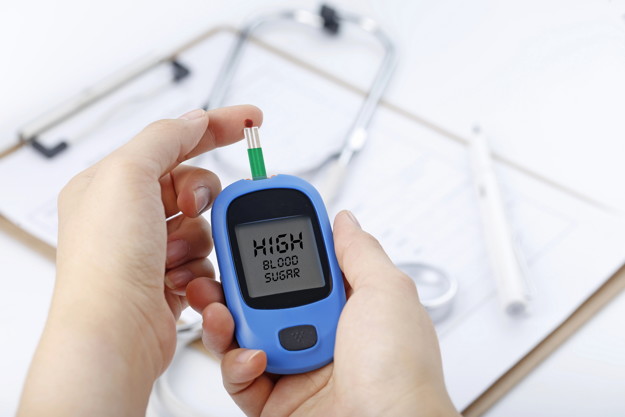By Nina Huang
Northwest Asian Weekly

“Asian Americans are twice as likely to have diabetes as Caucasians at the same weight; so the rate is twice as high,” Dr. Michael Shannon, medical director and endocrinologist at Physicians of Southwest Washington in Olympia, said.
The University of Washington (UW) has done research on the Asian diabetes issue. Shannon said that Wilfred Fujimoto M.D., UW Professor Emeritus, in Seattle did some pivotal research on Japanese American diabetes and heart disease.
“The big finding is that Japanese Americans carry intra-abdominal obesity. They don’t have the same fat you can see in other ethnic groups, but if you do a CT scan across their abdomen, they have a lot of fat tissue in the area that causes diabetes and cholesterol problems,” Shannon said.
Shannon went to medical school at the University of California in San Diego and went to the UW for his residency and to study endocrinology. He’s been in endocrinology for 13 years. He also serves the American Diabetes Association (ADA) as a board member in Washington plus several national committees.
Intra-abdominal obesity is when you cannot physically see the fat because it’s invisible from the outside, which doesn’t make you think one is overweight.
According to the National Institute of Health and the Centers for Disease Control, Asian Americans have the highest rates of undiagnosed diabetes, and more than half of Asian Americans don’t know they have diabetes, which is the highest for any ethnic group.
Most people get screened when their body mass index (BMI) is 25 because that’s considered overweight, 30 is obese. Shannon explained that there’s a big campaign for “Screen at 23” because of the potential for Asians to be diagnosed with diabetes with a lower BMI than whites.
What does screening entail?
- Get a fasting blood draw. The doctor can do this at the same time as the cholesterol test. Requires an overnight fast.
- Hemoglobin A1C blood draw test. This takes the rough average of the last three months of sugar levels.
- Oral glucose tolerance test. This tests for gestational and type 2 diabetes with a sugar drink to see if sugar goes up.
Diabetes is also the fifth leading cause of death among Asians and Pacific Islanders. In addition, Asians have a higher rate of kidney failure than whites, and the average Asian person receives more dialysis.
Diabetes is defined as having a higher than normal sugar level:
- Normal fasting sugar – under 100
- Pre-diabetes – 100-125
- Diabetes – over 126
On average, it takes about five years before pre-diabetics progress to diabetes, Shannon said.
Preventative screening starts at age 45. If you’re under 45, it’s good to get screened if you have risk factors, including being overweight or obese, have a BMI of 23 if you’re Asian, or BMI of 25 if you’re white.
Shannon explained that part of the danger of pre-diabetes is that for a long time, there may be no symptoms and it could still be doing damage to your eyes, feet, and kidneys. Symptoms that could emerge later include increasing thirst, increasing urination, and blurry vision.
The executive director of the ADA of Washington and Alaska, Terry Pollard, said that diabetes often goes hand in hand with cardiovascular diseases, which can lead to stroke, heart disease, kidney disease, blindness, and amputation. In fact, the leading cause of kidney disease is diabetes.
“Diabetes really works against the body in that it leads to other diseases,” he said.
But diabetes can be well managed, and diabetics can live the same normal lifespan as a non-diabetic person with careful maintenance—diet, exercise, and insulin and non-insulin medications, he added.
In order to prevent diabetes, Shannon said that diet and exercise are very important.
There are also diabetes-friendly meal plans on the American Diabetes Association’s Food Hub site: diabetesfoodhub.org.
Pollard said the YMCA offers a diabetes prevention program that many providers cover. It helps people be more active and get more support when they have pre-diabetes to prevent them from advancing to type 2 diabetes.
The most prevalent is type 1 diabetes, which is an autoimmune disease, and it usually occurs in childhood or in young adults, and can run in the family. Type 2 diabetes tends to appear later in life and is more lifestyle- and background-related. If a family member has Type 2 diabetes, then one could be more likely to get it.
Pollard shared a story about his Asian colleague at ADA who had to educate his primary care doctor on getting screened for diabetes at a BMI of 23, because of the potential risks of his ethnic background.
“Sure enough, he got screened and he did have pre-diabetes, and he wouldn’t have known if he didn’t get screened. It was a big ah-ha moment,” Pollard explained.
The “Screen at 23” initiative seeks to educate providers who previously might rule out diabetes as a risk factor for an Asian who is “skinny” or “average” in build. It requires educating the public that having a BMI of 23 is not a new definition of “overweight” or “obesity” for Asian Americans, but rather a number to look out for, one that should have individuals thinking about making healthy changes to their diet and incorporating healthy changes to their lifestyle, such as exercising. Above all, the campaign seeks to unmask diabetes and prediabetes in Asian Americans.
For more information, visit screenat23.org, diabetes.org, or call the American Diabetes Association’s Information Center at 1-800-DIABETES.
Nina can be reached at info@nwasianweekly.com.
This article sponsored by




